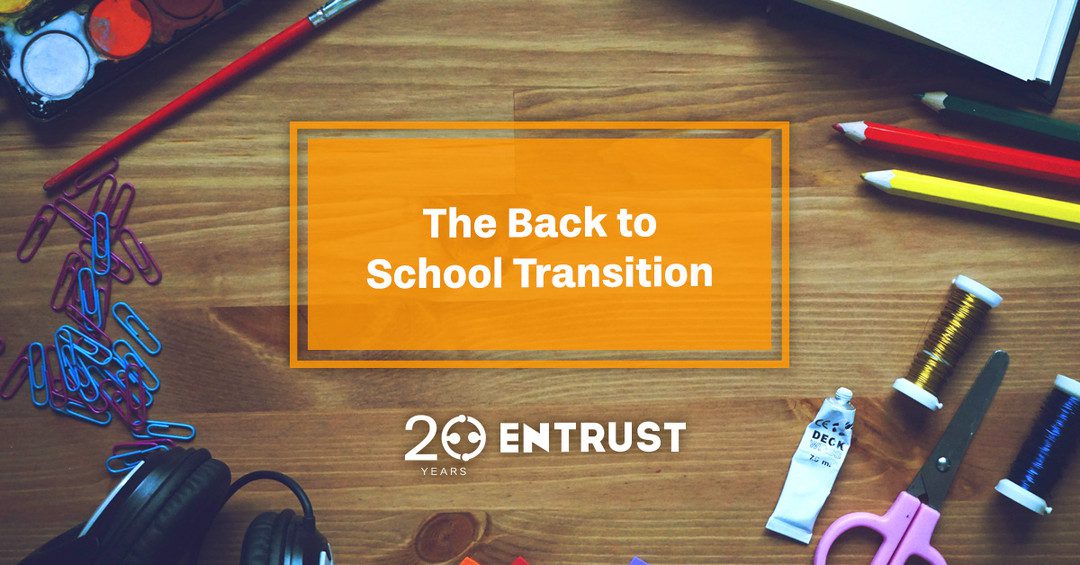
Top 3 Tips for Back to School

Aug 21, 2017
Advocate For Your Child With Structured Preparation Strategies
Children with cognitive or developmental disabilities, such as Autism Spectrum Disorder or Fetal Alcohol Spectrum Disorder (FASD), thrive with predictable, consistent daily routines and structured environments. Summer holidays are a massive departure from the structured academic environment found within the school year. This departure makes the transitional period between the school year and summer break quite significant for children with special needs.
With September right around the corner, we have put together some of our evidence-based transition tips and a couple resources to assist you in preparing for your child's back-to-school transition. These strategies are designed specifically for children with developmental disabilities who require additional support during routine changes.
It is important to time your reintroduction of school routines correctly for optimal results. If you begin preparing them too early your child may develop anticipatory anxiety about the upcoming changes. If you start too late your child may not be adequately prepared for the transition. The sweet spot for most children with developmental disabilities is about 1.5 to 2 weeks before school starts back up.
Top 3 Evidence-Based Transition Tips For Children With Disabilities
The preparation strategies used for preparing your child for the new school year will be completely unique to them. These strategies will depend on their individual personality traits and specific diagnoses. The following are some general evidence-based tips for easing the back-to-school transition that work well for most children with developmental disabilities.
1. Gradual Scheduling Adjustments To Match School Routines
Begin gradually swinging back to earlier bedtimes and wakeup times. These times should more closely match the school year schedule your child will follow. Black out blinds are a great investment for bedrooms. They will help your child fall asleep earlier by blocking external light sources.
Start following the same breakfast, snack, and lunch schedules that your child will be having in school. Follow these meal schedules to your best abilities at home. Try making incremental changes when implementing these schedule modifications. Sudden changes can cause distress for children with developmental disabilities.
2. Visual and Auditory Cues For Communication Support
Simple visual cues are extremely beneficial communication tools for both verbal and non-verbal children with developmental disabilities.
- The use of visual calendars make abstract time concepts more concrete and tangible for children
- Pictures of standard school items are effective visual supports in helping children understand what to expect during their school day. Download some school graphics here.
- Sharing photos of their teachers and classroom staff helps with facial recognition and reduces anxiety about unfamiliar people.
3-4 days before school begins try placing out their backpack, lunch container, and shoes near the door. Do this as long as this visual reminder does not cause anxiety for your child.
Personalizing a back-to-school social story for your child is an excellent method to provide gentle reminders of the school routine. Social stories help children with autism understand social situations and expectations. Download a story template here.
3. Gradual Reintroduction Into The School Environment
Reintroducing your child into their familiar school environment is another step that will prove to be effective in helping with the first few days of school. Roughly 3-4 days before the beginning of the school year, start taking short trips over to the school building. If possible go inside the building and walk to their specific classroom and other important areas like the cafeteria or library.
Your goal is to work towards providing your child with a positive school experience. This is especially important within the first week of the new school year. Diligence in preparing your child for the start of the new school year will help to ensure a smooth back to school transition. This preparation is particularly crucial for your child with developmental disabilities.
Check our blog during the first week of September for a few further tips on how to help your child adjust to and enjoy their school day routine! We will provide additional strategies for maintaining successful school transitions throughout the academic year.
